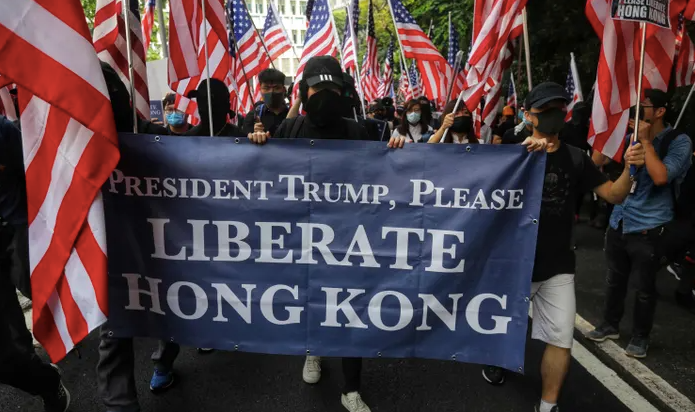More languages
More actions

A colour revolution is a term given to a revolution that appears to be led by the proletariat in search of liberal ideals, but is actually coordinated and funded by imperialist interests.
The point of a colour revolution is to appeal to liberals, whose ideology is prevalent in highly developed capitalist countries, so as to gain their support. As with all historical development, colour revolutions are part of the class struggle, and most people who participate (both behind the scenes and in the streets) are aligned with bourgeois interests.
If successful, a colour revolution will put the national bourgeoisie in power and turn them into a comprador class for the benefit of their imperial masters. As such, colour revolutions are usually waged against socialist states.
History
The term was originally used in western media after the illegal dissolution of the Soviet Union as countries in the union started transitioning to a capitalist mode of production. Capital was invested in these revolutions to make it seem like the people wanted to leave socialism and preferred capitalism. Most people did not entirely know what they were protesting for, with author Michael Parenti detailing in his book Blackshirts and Reds that many Soviet citizens thought they would still get all the benefits of socialism, but only with more consumer goods like they had seen in the USA.
Mechanism
Some negative sentiment is harnessed by imperialist organisations and allowed to prosper and continue, for example with programs such as the National Endowment for Democracy. This sentiment is then amplified globally by the media, either of private or public ownership (such as the CIA-owned Radio Free Asia) and presented as a legitimate call for liberty by the people.
In international media, very little to no attention is given to opponents of the revolution -- which reinforces the impression that the revolution is supported by everyone and that opponents are a fringe group.
Usually, imperialist organisations pick the friendliest and closest ideologically organisation to fund, train and push to lead the revolution. This is how, for example, Demosisto became the de-facto leader of the unrest in the eyes of the west during the Hong Kong Protests of 2019; they pushed for independence despite this idea being supported by less than a fourth of Hong Kong citizens.
The point of a colour revolution, which explains why imperialist organisations will get involved, is to establish capitalism and force open the market and exploitation of labour.
Examples
1980–1989
- 1989 Tian'anmen Square riots (China; failed)
- Counterrevolutions of 1989 (Eastern Europe)
1990–1999
- Annexation of East Germany (Germany)
- Overthrow of the Soviet Union (Soviet Union)
2000–2009
2010–2019
- Euromaidan (Ukraine)
- Velvet Revolution (Armenia)
- Hong Kong riots (China; failed)
- 2019 Bolivian coup d'état
2020–2029
- 2020 Belarusian protests (Belarus; failed)
- 2021 Cuban protests (Cuba; failed)
